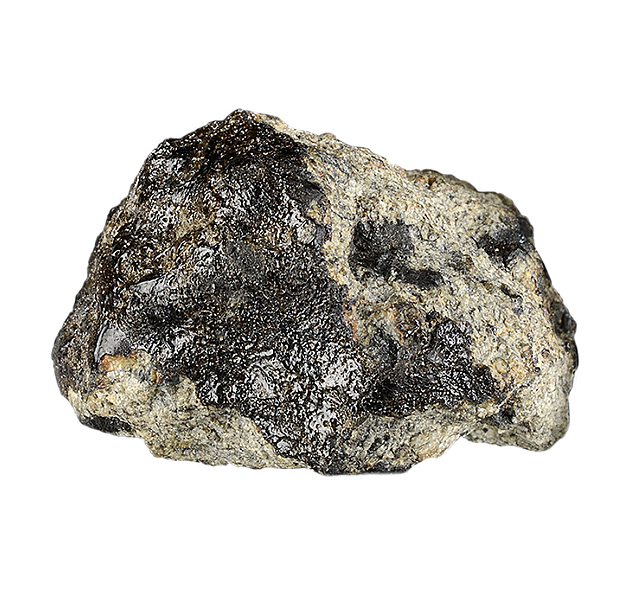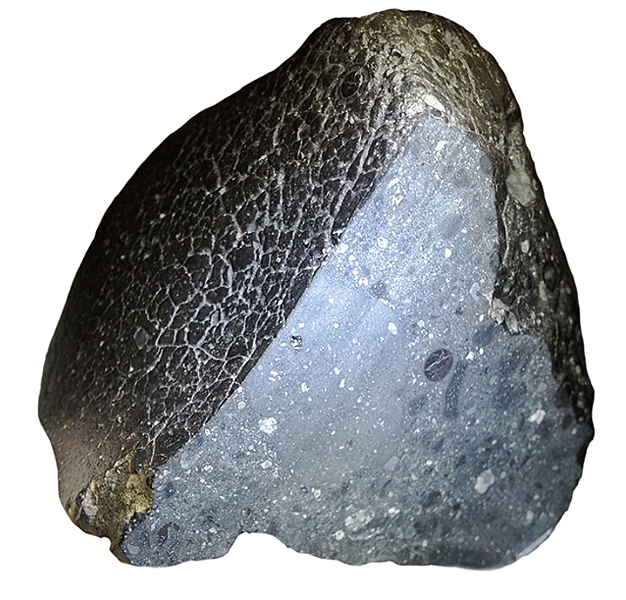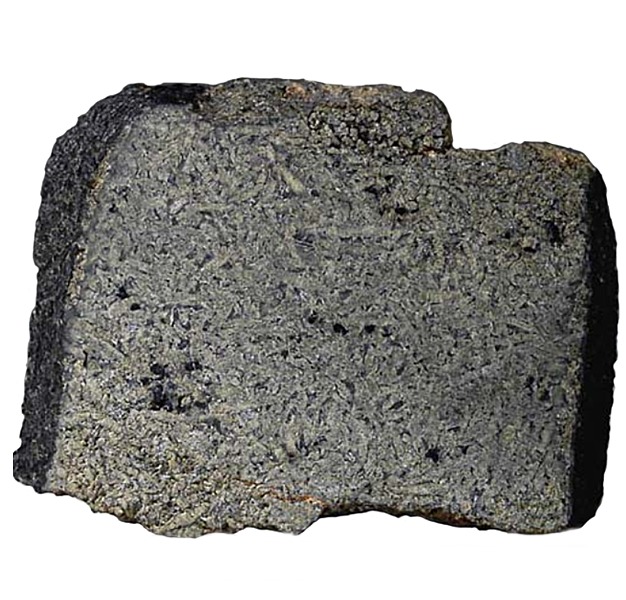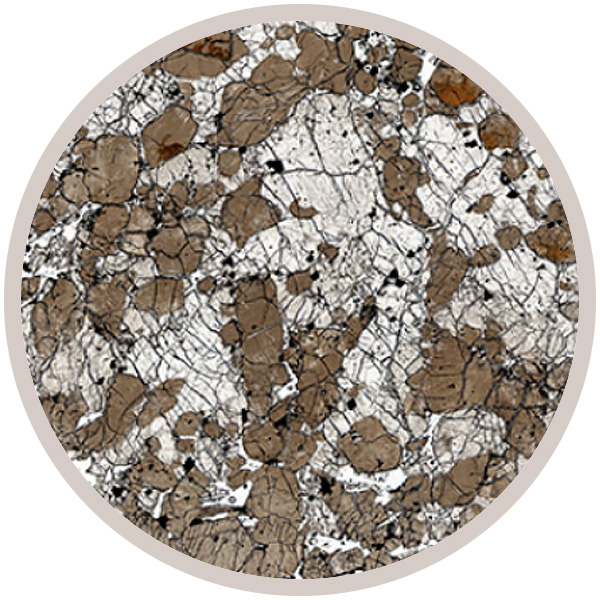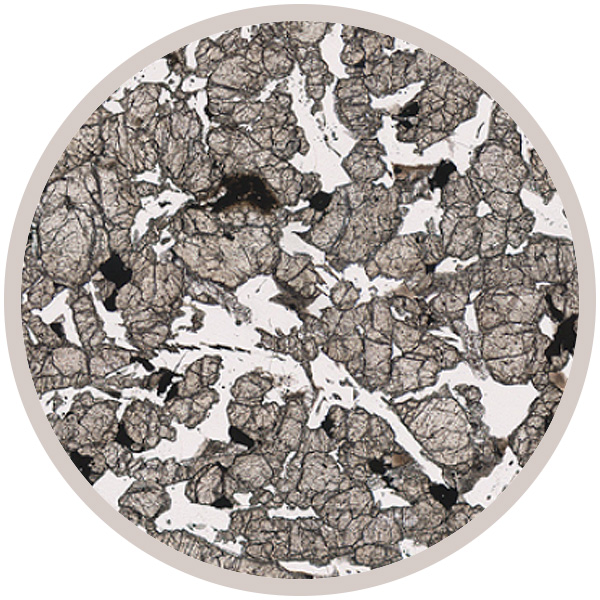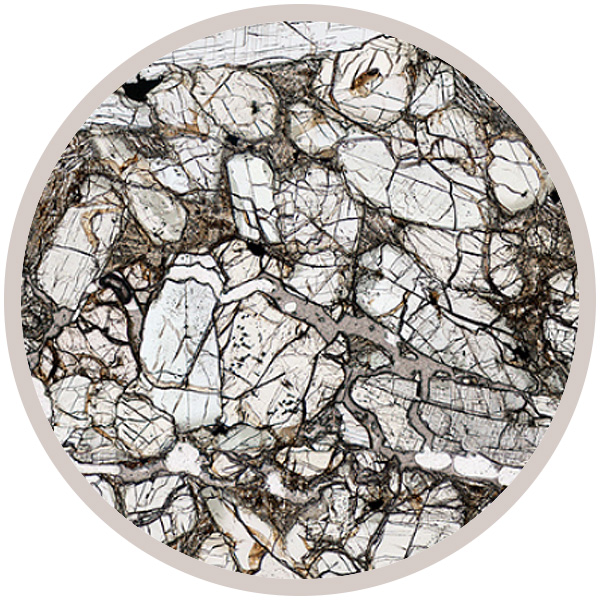
Fact sheet
Yamato 000593 is a 13.7 kg meteorite that was found in 2001 by the Japanese Antarctic Research Expedition. It was found on a bare ice-field in the Yamato Mountains of Antarctica and a few days later a paired specimen (Y000749) weighing 1.3 kg was also found. Both are clinopyroxene-rich nakhlites. Isotopic techniques have produced ages of 1.31 Ga (Sm-Nd) and 1.30 Ga (Rb-Sr) for Y000593. Its Mars ejection age is 12.1± 0.7 Ma.
The mineral assemblage consists of 80-85% coarse-grained, elongate crystals of pyroxene (augite) associated with a lesser amount (10%) of olivine. Plagioclase feldspar and pale brown glass fill interstitial patches between the pyroxene and olivine. Accessory constituents include pyrrhotite, titanomagnetite and tridymite. Veins in the olivine contain an amorphous gel of smectite-like composition. Iron carbonate and smectite-serpentine mixtures are present in other nakhlites.
This description draws on the work of NASA scientist Charles Meyer - compiler of The Mars Meteorite Compendium. Further details are available from the Antarctic Meteorite Newsletter. A pdf abstract published shortly after the discovery of Y000593 is available.
This collection of meteorites includes Shergottites, Nakhlites and Chassignites (or SNC meteorites) which originate from the surface of the planet Mars.
They carry unique signals of the surface of the planet that allows scientists to study the composition and age of Martian rocks. The collection includes a sample of the famous ALH84001 meteorite, evidence from which was used in 1996 to begin the debate of 'life on Mars?'.
